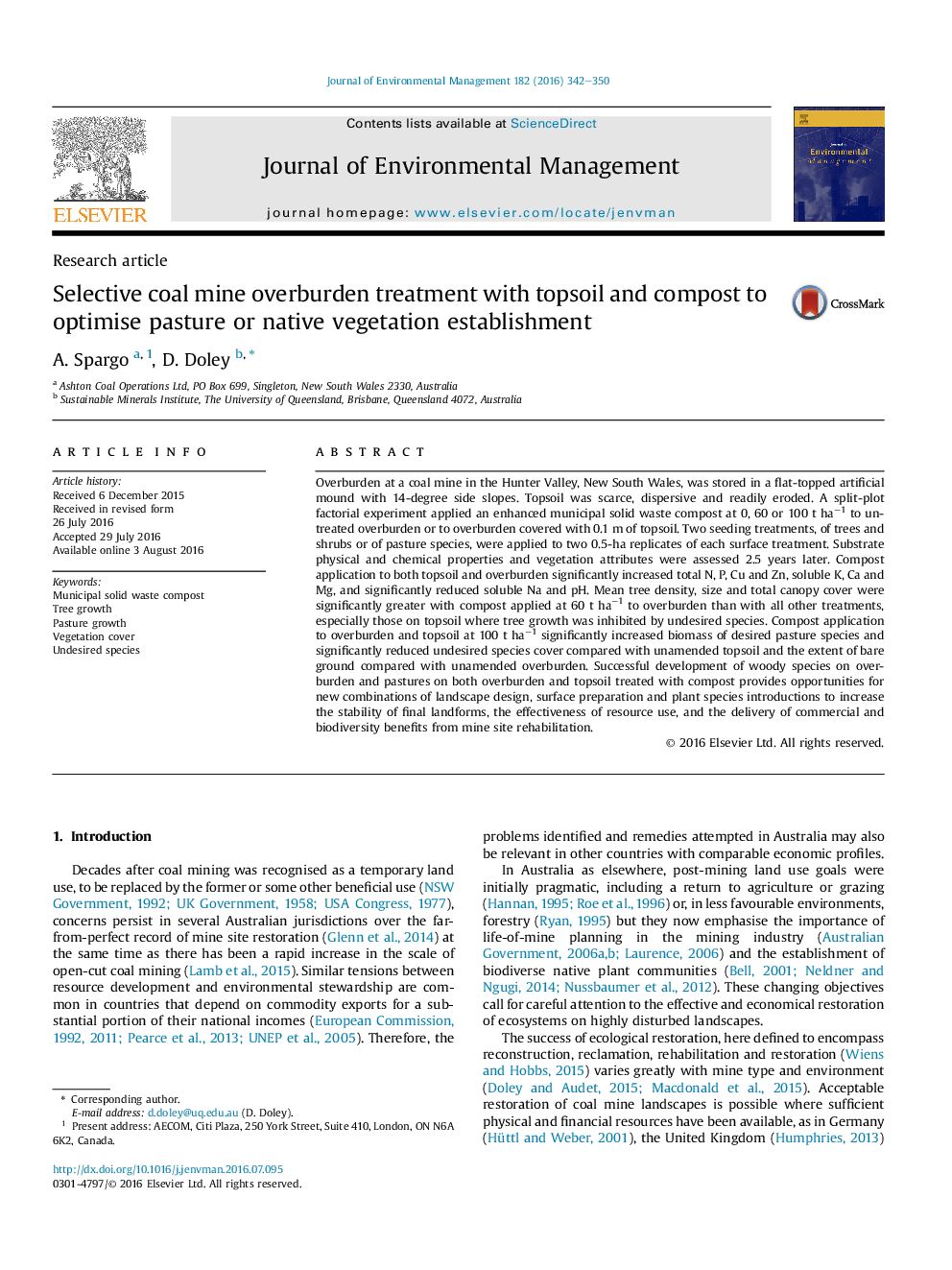| Article ID | Journal | Published Year | Pages | File Type |
|---|---|---|---|---|
| 7479132 | Journal of Environmental Management | 2016 | 9 Pages |
Abstract
Overburden at a coal mine in the Hunter Valley, New South Wales, was stored in a flat-topped artificial mound with 14-degree side slopes. Topsoil was scarce, dispersive and readily eroded. A split-plot factorial experiment applied an enhanced municipal solid waste compost at 0, 60 or 100 t haâ1 to untreated overburden or to overburden covered with 0.1 m of topsoil. Two seeding treatments, of trees and shrubs or of pasture species, were applied to two 0.5-ha replicates of each surface treatment. Substrate physical and chemical properties and vegetation attributes were assessed 2.5 years later. Compost application to both topsoil and overburden significantly increased total N, P, Cu and Zn, soluble K, Ca and Mg, and significantly reduced soluble Na and pH. Mean tree density, size and total canopy cover were significantly greater with compost applied at 60 t haâ1 to overburden than with all other treatments, especially those on topsoil where tree growth was inhibited by undesired species. Compost application to overburden and topsoil at 100 t haâ1 significantly increased biomass of desired pasture species and significantly reduced undesired species cover compared with unamended topsoil and the extent of bare ground compared with unamended overburden. Successful development of woody species on overburden and pastures on both overburden and topsoil treated with compost provides opportunities for new combinations of landscape design, surface preparation and plant species introductions to increase the stability of final landforms, the effectiveness of resource use, and the delivery of commercial and biodiversity benefits from mine site rehabilitation.
Related Topics
Physical Sciences and Engineering
Energy
Renewable Energy, Sustainability and the Environment
Authors
A. Spargo, D. Doley,
